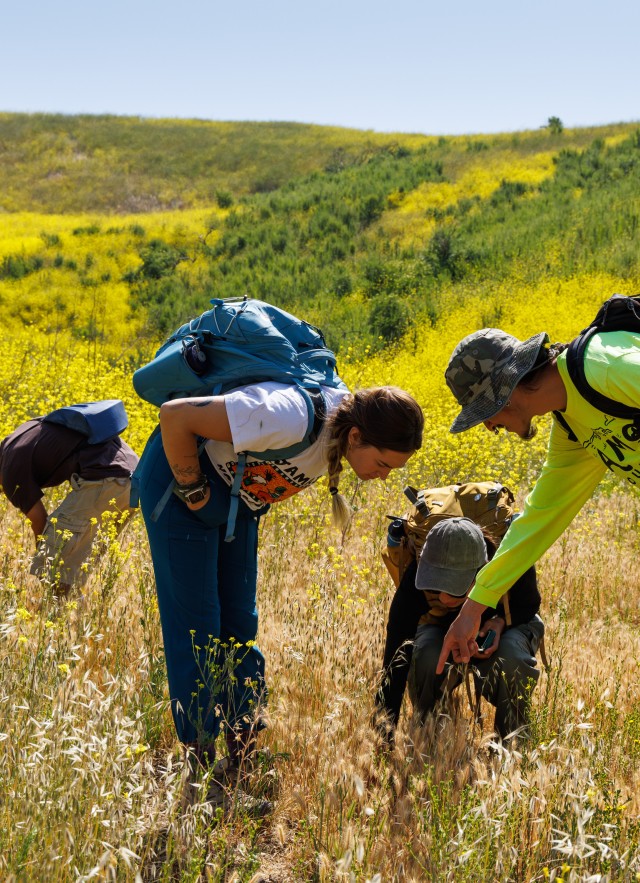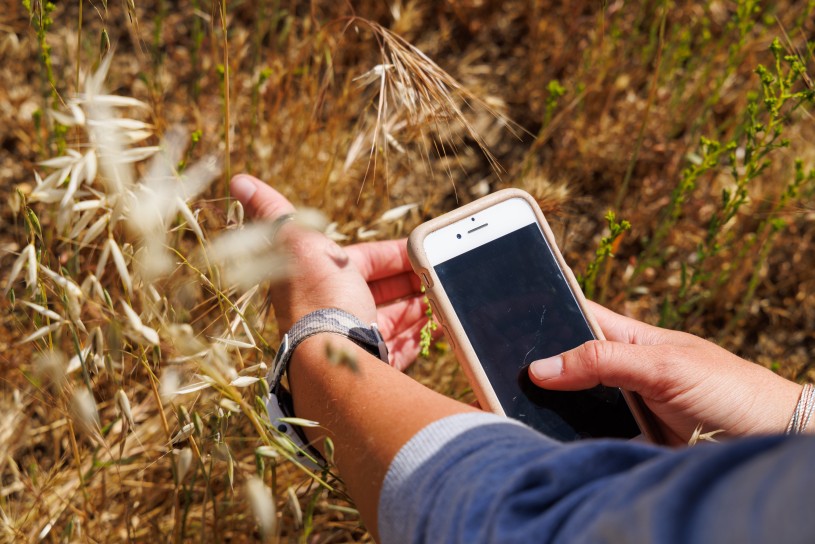Los Angeles, CA (April 11, 2023)–The City Nature Challenge—one of the world’s largest community science events—returns for its eighth year of connecting people through local nature and their communities. Kicking off April 28 at 12:01 am PT, the Challenge runs through May 1, 11:59 pm. From participating in organized biodiversity surveys to recording the wildlife in their own neighborhood, the City Nature Challenge encourages community scientists of all levels to explore their local environment—all while contributing to biodiversity science and conservation and using free mobile apps like iNaturalist. Identification of photographed species will be crowdsourced through the online community May 2 – May 7 and results will be announced on May 8.
After launching the first-ever City Nature Challenge in 2016, the Natural History Museums of Los Angeles County (NHMLAC) and San Francisco’s California Academy of Sciences (CAS) are hosting their eighth effort. In 2022, the Challenge broke numerous records, with more than 67,000 community scientists around the world amassing over 1,690,000 observations from 445 cities—including at least 2,244 rare, endangered, or threatened species.
"Every year, the City Nature Challenge allows us to connect with the greater Los Angeles community when we come together to observe wildlife and gain a deeper understanding of the natural world around us," said Dr. Lori Bettison-Varga, President and Director of NHMLAC. "As a scientist, I know how important community-driven data is in tracking and conserving urban wildlife and I am ecstatic to see the continued growth of this initiative.”
In previous years, observations made during the Challenge have helped scientists detect patterns of biodiversity change on a global and local scale. These wildlife observations provide invaluable insights, allowing scientists, conservationists, and policymakers to make informed resource management and conservation decisions. The City Nature Challenge is a community-based collaborative event that harnesses scientific data to regenerate ecosystems and reverse biodiversity loss. By observing and documenting local wildlife, community scientists give insight into the biodiversity of locations throughout the world.
“The community-driven data from the Challenge helps scientists learn how our ecosystem is evolving,” said Lila Higgens, NHMLAC’s Senior Manager of Community Science, and co-founder of the Challenge. “With recent changes in weather patterns in Los Angeles, I look forward to seeing if this year’s findings differ from previous years.“
“The City Nature Challenge is the only global event that uses the iNaturalist platform,” says Anabela Plos, City Nature Challenge Spanish Language Global Organizer. “The sheer scale of this four-day event provides a unique opportunity to make and share observations of nature from around the world and expand our collective biodiversity knowledge.”
For both budding and veteran community scientists, participation is easy. Photos of wild plants, animals, or fungi taken during the Challenge can be uploaded to iNaturalist, where an online community of naturalists confirms species identifications. Whether participating in an organized “bioblitz” or making observations in their own neighborhood, the Challenge is for budding and seasoned explorers alike.
Wildlife can be found in the participants’ homes, neighborhoods, backyards or anywhere else, and can be any wild plant, animal, fungi, slime mold, or other evidence of life (scat, fur, tracks, shells, etc.). Then the community scientists can just take photos and/or sound recordings of their findings and upload them to iNaturalist or their city’s chosen platform either via an app or website—learning more about the plants and animals they find as their observations are identified. A guide to getting started is now available online.
Those not able to take photos or record their observations can focus their efforts on identifying species documented in their area during and after the Challenge. Many organizers in cities around the world will be hosting wildlife identification events May 3–7.
Local support for the City Nature Challenge is generously provided by Boeing and the Los Angeles Department of Water and Power.
NHMLAC Programming
The Natural History Museum is hosting public events in the lead up to and during City Nature Challenge 2023:
Earth Day and Beyond: Community Science Virtual iNaturalist Training
Thursday, April 20, 2023 from 7–8 pm
Tickets: https://nhm.org/tickets/events/earthday-cs
With iNaturalist every day is Earth Day: learn how to use iNaturalist and contribute to community science by turning your photos into data points that help researchers study nature all around the world!
City Nature Challenge Wildlife BioBlitz at Whittier Narrows
Sunday, April 30, 2023 from 9 am to 2 pm
Join the City Nature Challenge at Whittier Narrows Natural Area and learn how to contribute to biodiversity using iNaturalist in Spanish and English!
- English iNaturalist Training & Guided Walk at 9 am
- Spanish iNaturalist Training & Guided Walk at 12 pm
iNaturalist
Signing up is easy and free. Visit inaturalist.org from your browser, or download iNaturalist from the Apple App Store or Google Play store.
Social Media
#CityNatureChallenge
Twitter handle: @citnatchallenge
Instagram: @citnatchallenge
About the Natural History Museums of Los Angeles County:
The Natural History Museums of Los Angeles County (NHMLAC) include the Natural History Museum, La Brea Tar Pits, and the William S. Hart Museum. They operate under the collective vision to inspire wonder, discovery, and responsibility for our natural and cultural worlds. The museums hold one of the world’s most extensive and valuable collections of natural and cultural history—more than 35 million objects. Using these collections for groundbreaking scientific and historical research, the museums also incorporate them into on- and offsite nature and culture exploration in L.A. neighborhoods, and a slate of community science programs—creating indoor-outdoor visitor experiences that explore the past, present, and future. Visit NHMLAC.ORG for adventure, education, and entertainment opportunities.

